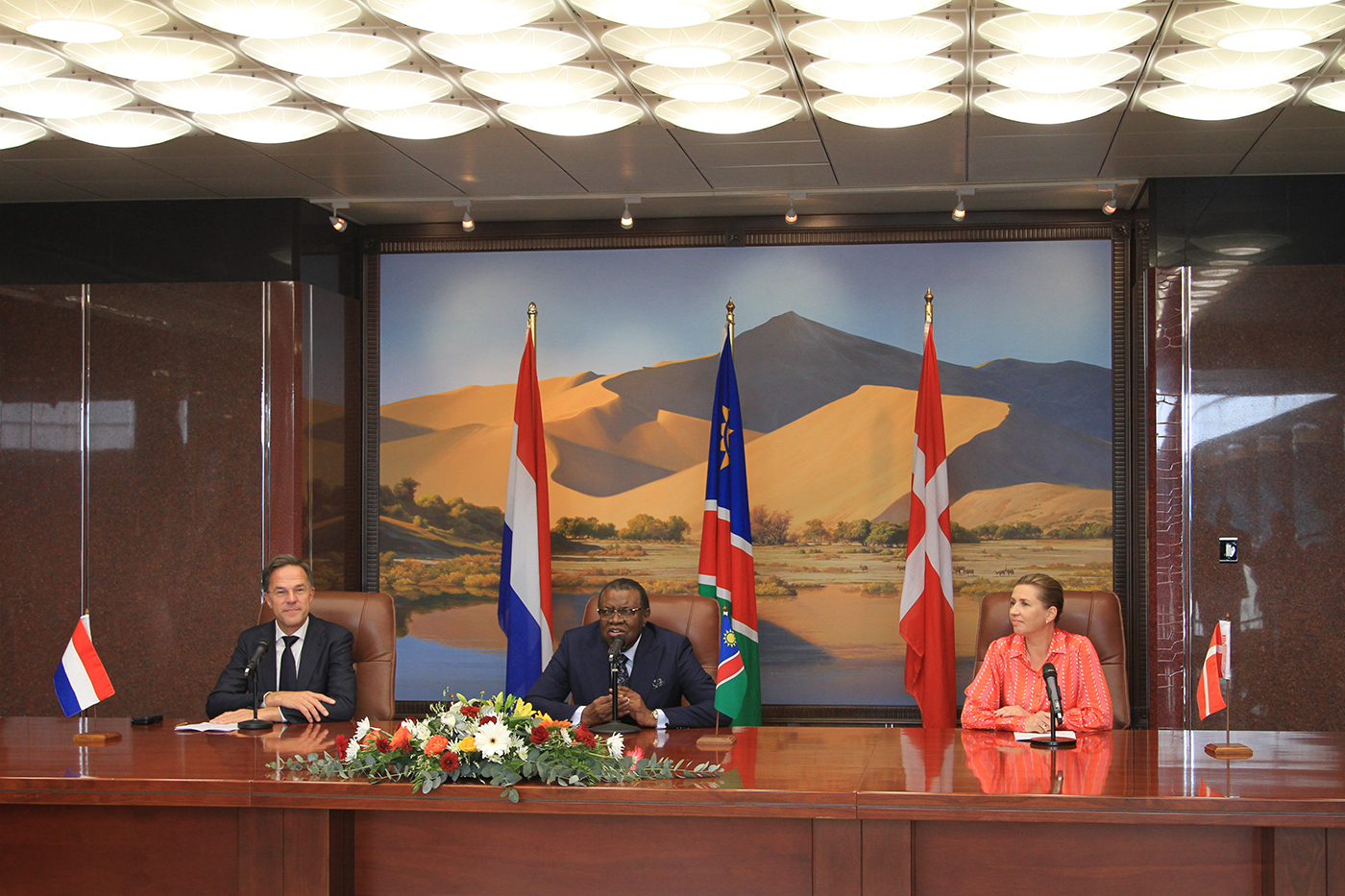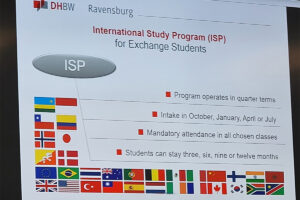Prof Kenneth Matengu, Vice-Chancellor of the University of Namibia and Daniël Wigboldus, President of the Executive Board of Radboud University signed the framework agreement at State House in Windhoek to strengthen the collaboration between UNAM and Radboud University and to realise the construction of the Africa Millimetre Telescope in Namibia. The agreement is the confirmation of earlier Memorandums of Understanding to explore possibilities to build a millimetre-wave radio telescope. With funding secured the design and construction phase can now formally continue.

The agreement signing took place in the presence of Namibian President Hage Geingob, Prime Minister of the Netherlands Mark Rutte and Prime Minister of Denmark Mette Frederiksen. The Dutch and Danish governments visited Namibia to discuss Namibia’s ambitions to become a world leader in green hydrogen production and aims to encourage knowledge sharing between the countries. “African and European universities working together on the basis of equity and respect furthers not only science but our societies as well,” says Wigboldus. “Signing this framework agreement today marks the friendship between our universities”.
Africa Millimetre Telescope
The telescope will be built on or close to the Gamsberg in the Khomas highlands and is designed to be able to connect to the Event Horizon Telescope (EHT) network. The EHT collaboration published the first images of two supermassive black holes in 2019 and 2022. The AMT, situated in the southern hemisphere, will have an excellent view of the black hole in the centre of our Milky Way and form a crucial link between telescopes in Europe, South and Latin America and at the South Pole. It is designed to increase the resolution of the EHT network to be able to make videos of the close regions of a black hole’s event horizon. The AMT will also be available for research as a stand along telescope, enabling Namibian scientists and others to research other topics otherwise not accessible through larger facilities.

“This telescope gives UNAM and Namibia the opportunity to take part in world-class and high-quality science. It opens the doors to other innovations and education opportunities which will benefit Namibia, and enables the astronomy group at our university to grow” explained Prof Matengu.
Mobile Planetarium
The delegation was invited to visit the AMT mobile planetarium by astronomy students of UNAM. The students emphasised the importance of inspiring a future generation scientists and technicians at a young age to enable Namibia to become a leading nation in tackling the global climate and energy crises. The mobile planetarium is a collaboration between the University of Namibia, Radboud University and the Dutch Research School for Astronomy, and aims to reach all schools in Namibia during the project’s lifetime.

About the Africa Millimetre Telescope collaboration
The AMT is an international collaboration consisting of the University of Oxford, the University of Amsterdam, Turku University and other Dutch research institutes, alongside Radboud University and University of Namibia. The project is funded by the Dutch Research Council, European Research Council and Radboud University, construction is planned to start in 2026. A social impact programme which aims to contribute to a positive outcome for Namibia is part of the project. It includes a mobile planetarium run by Namibian students travelling to schools throughout the country, and supported by the Dutch Research School for Astronomy, and a fellowship programme that supports Namibian students who study astronomy.
For more information, please contact:
Prof. Heino Falcke, Radboud University
Email: h.falcke@astro.ru.nl
Prof. Michael Backes, University of Namibia
Email: mbackes@unam.na
Press contacts
Radboud University Press Office
Email: media@ru.nl
Tel: + 31 (0)24 361 6000
University of Namibia Media Office
Email: snamesho@unam.na
Related content





